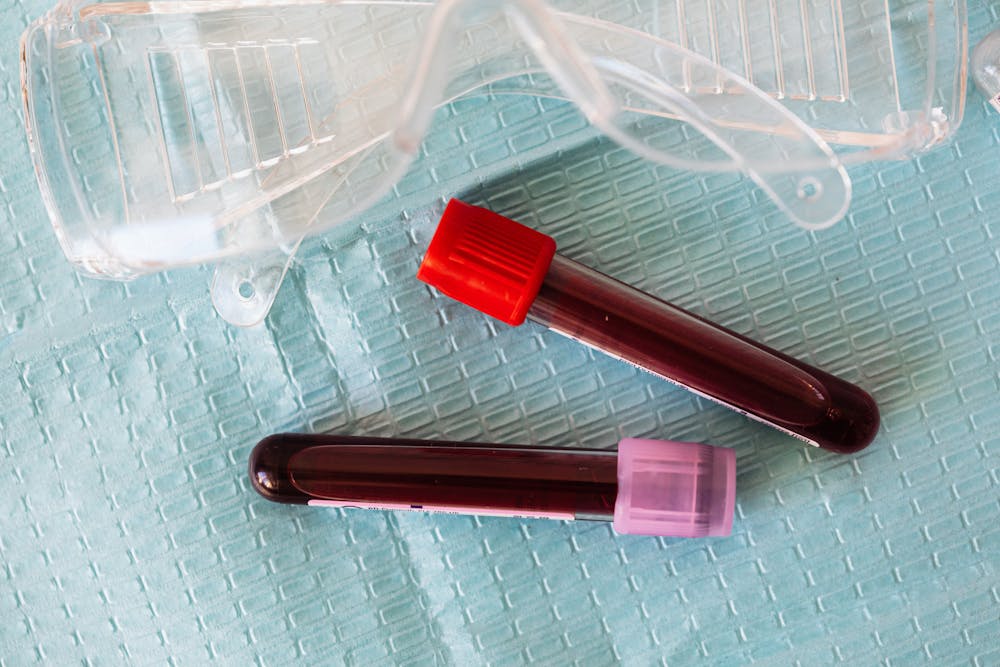
What makes the blood look red
Human blood is red due to the protein haemoglobin, which contains a red-colored compound called heme, which is essential for transporting oxygen through your bloodstream. Heme contains an iron atom that binds to oxygen, and it is this molecule that transports oxygen from your lungs to the rest of your body.
Red blood cells transport oxygen throughout the body. This is critical for your health. Like doughnuts without a hole, red blood cells are round with a flattish, indented centre. A blood test can be used by your healthcare provider to determine the size, shape, and health of your red blood cells.
Iron-rich foods aid in the maintenance of healthy red blood cells. Vitamins are also required for the formation of healthy red blood cells. These include B-2, B-12, and B-3 vitamins, which can be found in foods like eggs, whole grains, and bananas. Folate is also beneficial. Fortified cereals, dried beans and lentils, orange juice, and green leafy vegetables all contain it.
Chemicals appear different colours to our eyes depending on the wavelengths of light that they reflect. Because haemoglobin bound to oxygen absorbs blue-green light, it reflects red-orange light into our eyes, causing them to appear red. When oxygen binds to iron in blood, it turns a bright cherry red. Blood is a darker red colour when it is not connected to oxygen.
Hemoglobin is a protein found within red blood cells. It transports oxygen. Red blood cells also remove carbon dioxide from your body and transport it to your lungs for exhalation. The bone marrow is where red blood cells are created. They usually live for about 120 days before dying.
Carbon monoxide, a potentially lethal gas, can also form a bond with heme that is 200 times stronger than that of oxygen. With carbon monoxide present, oxygen cannot bind to haemoglobin, resulting in death. Because carbon monoxide does not let go of the heme, your blood remains cherry red, making a carbon monoxide poisoning victim appear rosy-cheeked even after death.
Blood can appear blue through our skin at times. Perhaps you’ve heard that blood in our veins is blue because it lacks oxygen on its way back to the lungs. However, this is incorrect; human blood is never blue. The veins’ bluish colour is an optical illusion. Blue light does not penetrate tissue as deeply as red light. Due to the blood’s partial absorption of red wavelengths, your eyes will see more blue than red reflected light if the blood vessel is sufficiently deep.
Many types of anaemia are caused by diseases of the red blood cells. This is a condition in which there are insufficient red blood cells to transport enough oxygen throughout the body. Anemia patients may have red blood cells with an abnormal shape or that appear normal, larger than normal, or smaller than normal.
However, blue blood does exist in the animal kingdom. It is common in animals like squid and horseshoe crabs, whose blood relies on a chemical called hemocyanin, which contains a copper atom, to transport oxygen. Other animals have green, clear, and even purple blood. Instead of haemoglobin, each of these blood types uses a different molecule to transport oxygen.
Anemia symptoms include fatigue, a rapid heart rate, pale skin, a feeling of being cold, and, in severe cases, heart failure. Children who do not have an adequate supply of healthy red blood cells grow and develop at a slower rate than other children. These symptoms demonstrate the significance of red blood cells in your daily life.
Despite exceptions, the majority of animal blood is red. But that doesn’t mean it’s identical to what runs through our veins. Because different species have different haemoglobin variations, scientists can distinguish blood samples from different animals.
Spilled blood that starts out red becomes darker and darker as it dries and its haemoglobin breaks down into methemoglobin. Dried blood changes over time, becoming darker as a result of another compound known as hemichrome. Because of the constant chemical and colour change, forensic scientists can determine when a blood drop was left at a crime scene.
Hope that was a wonderful learning time for all of you.